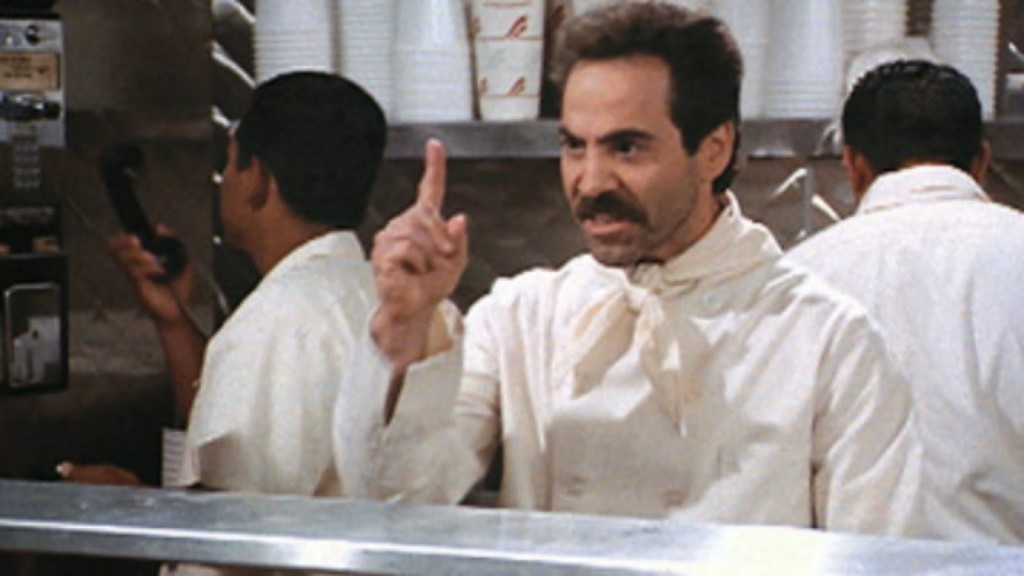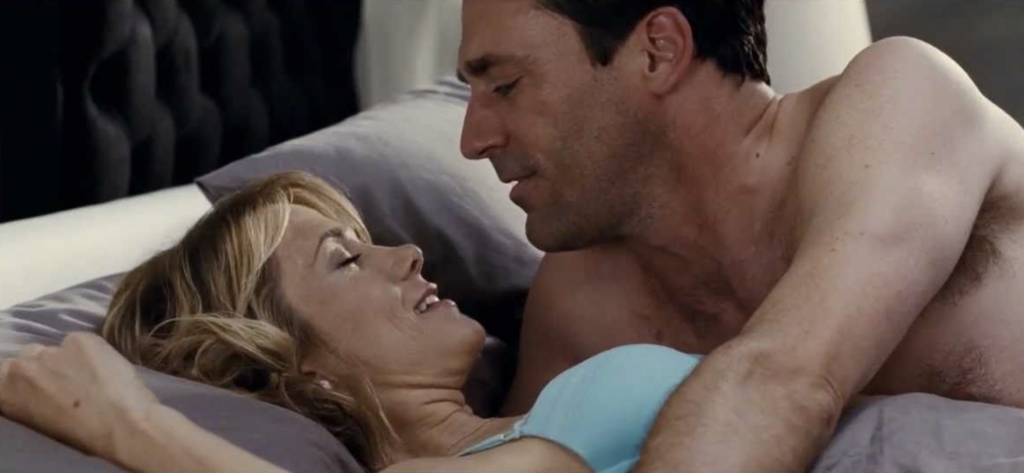And how can we steal their secrets for features?
The only thing that matters right now is that they’re finally building a real lightsaber. Not those fakey glorified glow-sticks but a real live lightsaber that rises up from the handle. I will be the first one to buy this when it comes out, even if it means dipping into my retirement fund. There are some things that are more important than long-term financial security. Five Guys French fries and lightsabers are near the top of the list.
In non-lightsaber related news, I was recently thinking about how rare it is to find a funny movie. Yet there are a ton of funny television shows. That got me wondering why television seems to be such a better format for comedy. I was hoping that, if I examined that paradox today, I might be able to discover a few things about why TV is better for comedy and steal those lessons for the feature world.
Let’s get into it!
The sit-com seems to be the master laugh-generating format. From The Jeffersons to Cheers to Seinfeld to Friends to Modern Family to South Park to Broad City to Curb Your Enthusiasm. These shows figured out a formula to keep you laughing for 30 straight minutes. And they do it week after week after week.
Meanwhile, how many great comedy features did we get last year? The most recent comedy studio release was The War With Grandpa. Anybody see that? I didn’t think so. 2020’s comedy behemoth was Like a Boss, a movie with a trailer so unfunny, it reportedly killed the editor’s ability to laugh. 2019’s big comedy was Goodboys, which is, arguably, the best studio comedy of the last three years. If that doesn’t tell you where we are in the feature comedy world, I don’t know what does.
Part of the problem is that all the things that make movies great don’t transfer well to comedies. With Hollywood movies, the sets are always bigger. The effects are always bigger. The locations are always bigger. The overall production design is stronger. This is what helped them create Titanic, The Avengers, Terminator 2, Fast and Furious, The Dark Knight Rises.
But none of those things matter in comedy. I suppose bigger locations and bigger sets are important for action-comedies like Spy. But there has never been a correlation between bigger budget and bigger laughs. In fact, I’d argue the opposite is true. The more expensive a gag, the dumber it usually is.
There’s a scene in Spy where Susan is on a private plane that gets hijacked and we get a five minute “comedic” sequence where they’re going in and out of zero gravity. There wasn’t a single laugh in the scene. And I’m guessing the sequence took 4-5 days to shoot and was one of the more logistically complicated scenes. I wouldn’t be surprised if the price for that scene came out to 4 million dollars. For zero laughs!
A good laugh usually costs nothing but the the actors you’re paying and the writer who wrote the joke.
One big advantage TV has over movies is that, other than the pilot episode, TV doesn’t have to set up its characters. That is huge. Character set up is public enemy number 1 for feature writers. Before you can laugh at a character, you must understand who they are. You must first understand the contradiction of George Costanza (neurotic, dim-witted, yet oddly entitled) before you can appreciate his interaction with the soup nazi, a man he’s been told never to question, yet when he’s not given any bread with his soup, he can’t help himself. He must bring up the injustice.
But that George is not present in Seinfeld’s first five episodes. It takes a while for us to understand that that’s who George is. Unfortunately, movies don’t give anywhere near that much time to establish a character. You have two, maybe three scenes, to convey to an audience exactly who your character is. And that creates some limitations. Out goes complexity. Out goes subtlety. This forces you to create one-dimensional on-the-nose characters who don’t feel like real people.
That’s a key detail that a lot of people forget about comedy. Yes, almost every comedic character is an exaggeration. However, they still need to be based on people we feel like we know. In other words, they have to be based in reality. We all know someone like George Costanza who can’t help himself. He *must* die on that hill, even when all the data suggests it’s not a hill worth dying on.
So, character is the first hurdle feature comedy writers must leap. Spend as much time as possible coming up with really funny characters then figure out how you’re going to convey that particular brand of humor in a few short scenes at the beginning of your screenplay. I mean who doesn’t know who Annie in Briedesmaids is after her first scene?
That’s the scene where Annie’s having sex with a douchebag character played by Jon Hamm and even though the sex is horrible, she’s desperate to be his girlfriend, sneaking into the bathroom before he wakes up the following morning to do her hair and make-up so that when he does wake up, she can pretend this is how she always looks. That desperation to find someone helps us understand Annie’s jealousy issues at her best friend getting married AND having to share maid-of-honor duties with the bride’s new best friend. Annie’s jealousy is the engine for almost her entire comedic performance and the setup of that character was a big reason why that worked.
The second big difference I noticed between comedy in TV and film is the way they go about their laughs. TV is mainly about creating a series of comedic situations. “Situation” is the “sit” in “sit-com.” “Situation-comedy.” So as a sit-com writer, you’re basically looking to find funny situations. Plot isn’t that important. There obviously needs to be some setup involved and that requires exposition and, possibly, an earlier scene or two. But if something requires too much setup, you don’t want to mess with it in television.
I’ve noticed that a lot of comedic TV situations are based on misunderstandings. One of my favorites occurs in Modern Family when Phil (the well-meaning but clueless dad) befriends a guy at the gym (played by Matthew Broderick) who he has no idea is gay. Phil invites the gym friend to his house to watch a basketball game (they share the same alma mater), having no idea that the friend is interpreting this as a hook-up opportunity. The *situation* plays out with Phil cluelessly rooting his basketball team on while high-fiving and hugging the gym friend, who keeps attempting to escalate the physical contact into something more (signals that Phil always misses).
Meanwhile, feature films, for some reason, shy away from situational comedy. Instead, they replace this with “set-piece” comedy. Set-pieces such as the famous dinner scene in Meet the Parents where Greg attempts to tell Jack that anything that has nipples can be milked. This both sort of makes sense to me and sort of doesn’t.
It would make sense that, because a movie is longer, you have the opportunity for longer scenes. But longer scenes require more setup to make them work. And setup is often unfunny. You try and make it funny, of course. But the underlying purpose of a setup scene ensures that it always feels like setup. And those scenes are always the most boring. One of the things that separates A-list comedy writers from everyone else is the ability to construct their setup scenes so that they’re individually funny scenes themselves and the audience doesn’t realize they’re being set up.
Think about that dinner scene in Meet The Parents – how much setup that required. You needed to establish that Greg had a ‘wussy’ job. This will be important later when you set up that Jack had a ‘manly’ job. You need to setup that Greg was just about to ask his wife to marry him before learning how important it is in their family to get the father’s approval first. You need to have Greg lose his suitcase on the flight. You need to set up her family and the wedding that’s going on that weekend. All of that stuff works its way into the dinner set-piece.
If you don’t do that or don’t know how to do that, you won’t have enough jokes to pay off. A joke punchline needs a joke setup and a set-piece is often the climax of a bunch of joke setups.
However, there’s something deeper going on here. I’m trying to imagine putting the Modern Family situation I mentioned above into a movie. Could you do that? I’m not sure you could. There’s something about a movie having a bigger overall theme and plot that would make a surface-level misunderstanding like that seem insignificant. And yet I don’t want to deprive comedy writers of such a strong comedic device. Obviously, something is wrong with the feature comedy format. We should be getting more than one funny studio movie every three years. Is the fact that it is so set-piece driven, and set-pieces are so much harder to pull off than situational comedy, the problem?
I need more time to study this but something tells me we can blend both situational comedy and set-piece comedy into a hybrid ‘situational set piece’ scenario that offers the best of both worlds. I’m sure some of you will point out movie scenes that do just this so I’m all ears. I’m ready to learn.
For now, though, those are the two lessons I want you to take away from today’s article. You need to put an insane amount of focus on figuring out your comedic characters and then even more focus on introducing them in a way where the audience immediately understands them AND what’s funny about them. Some sit-coms benefit from the fact that they’ve had two seasons to fully discover a comedic character. You don’t have that luxury so you need make up for it by nailing the introductory scenes.
The second lesson is that situational comedy is easier to pull off than set-piece comedy. And situational comedy is used so frequently in television shows that when a situation doesn’t work, you immediately have a shot with another one. Meanwhile, there’s so much time between set-pieces in movies that if even one of them doesn’t land, it could be the difference between a good and a bad comedy. Because who wants to wait 25 minutes for the next big laugh? For this reason, you must nail all the setup for your upcoming set piece so that you have a lot of jokes to pay off. And if a set piece isn’t working, you need to get rid of it and find another one. You don’t have the flexibility, like sit-coms do, to fail. Your set pieces all have to be the best you’re capable of.
I hope this helps!
I’m thinking of reviewing Stone Thunder or whatever that dreadful new Melissa McCarthy Ben Falcone superhero comedy on Netflix is called this Monday. I wouldn’t normally bother but it is a comedy and it’s obviously terrible so maybe we can learn something from it? Vote in the comments below!




